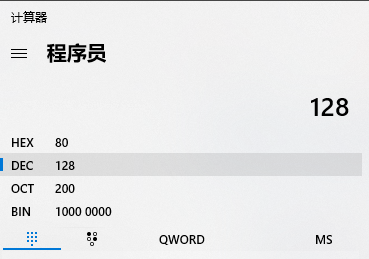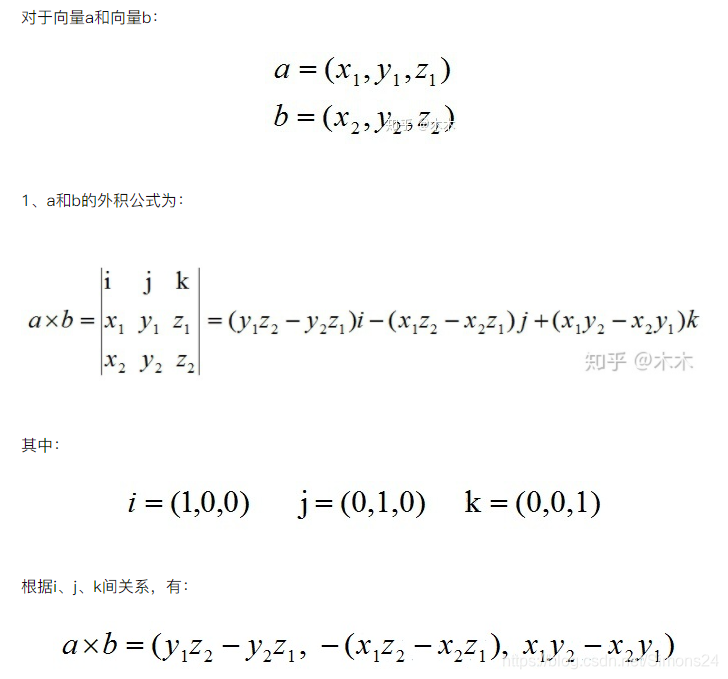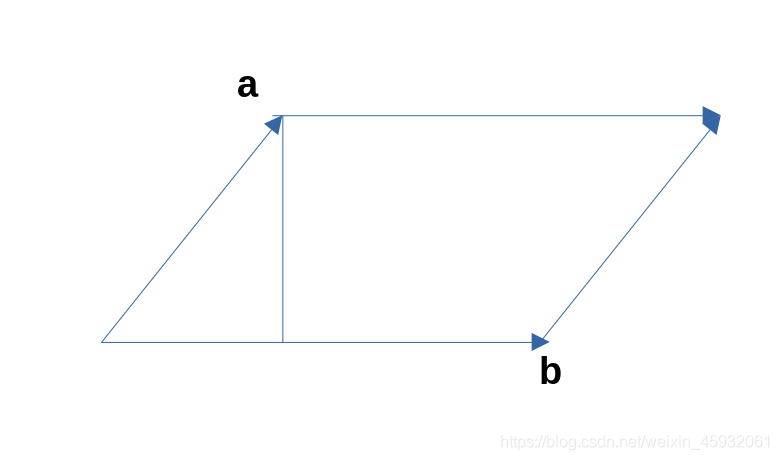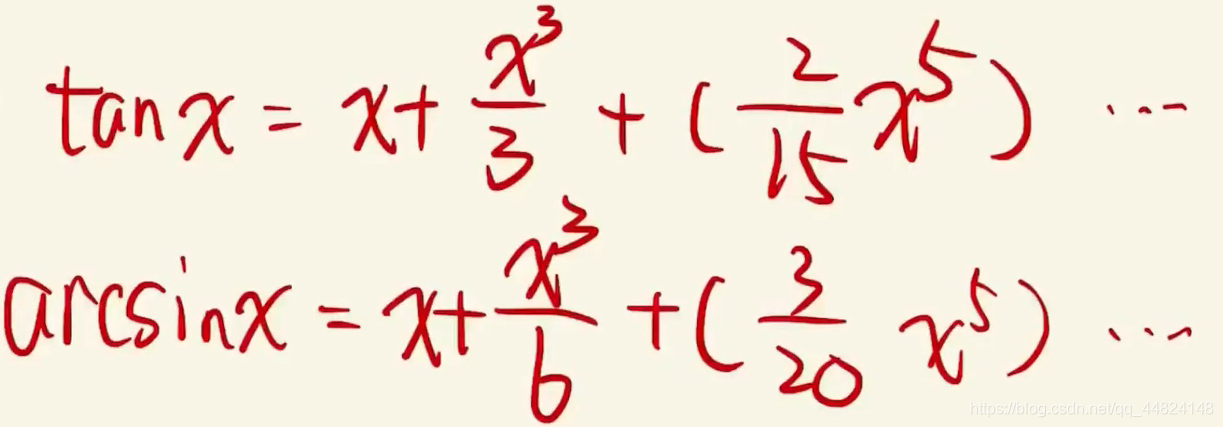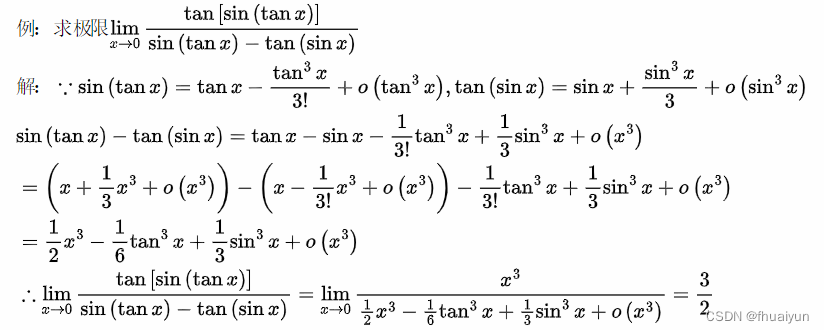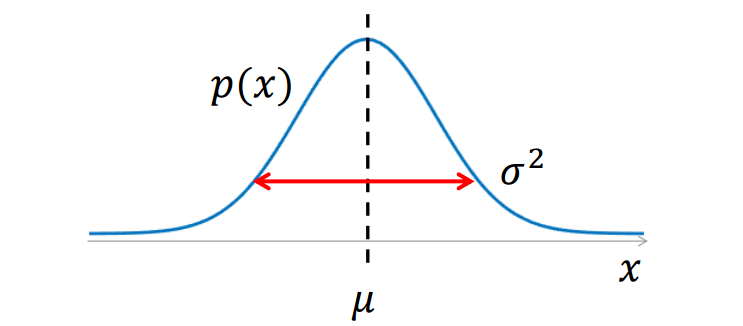首先要明白公钥是加密,私钥用来解密。
国密公钥格式:公钥为64位,前后各32位,对应椭圆算法中BigInteger X 和 BigInteger X ,私钥为32位,对应算法中的BigInteger d。
工具类:
可以参考https://www.cnblogs.com/jing99/p/14920120.html,我猜测这个也是看https://gitee.com/lucky_ldx/sm_national_secret_algorithm.git这个项目做的
引入的依赖:
<dependency><groupId>org.bouncycastle</groupId><artifactId>bcprov-jdk15on</artifactId><version>1.54</version></dependency>Cipher密码类:
import org.bouncycastle.crypto.AsymmetricCipherKeyPair;
import org.bouncycastle.crypto.digests.SM3Digest;
import org.bouncycastle.crypto.params.ECPrivateKeyParameters;
import org.bouncycastle.crypto.params.ECPublicKeyParameters;
import org.bouncycastle.math.ec.ECPoint;import java.math.BigInteger;public class Cipher {private int ct;private ECPoint p2;private SM3Digest sm3keybase;private SM3Digest sm3c3;private byte key[];private byte keyOff;public Cipher(){this.ct = 1;this.key = new byte[32];this.keyOff = 0;}private void Reset(){this.sm3keybase = new SM3Digest();this.sm3c3 = new SM3Digest();byte p[] = Util.byteConvert32Bytes(p2.getX().toBigInteger());this.sm3keybase.update(p, 0, p.length);this.sm3c3.update(p, 0, p.length);p = Util.byteConvert32Bytes(p2.getY().toBigInteger());this.sm3keybase.update(p, 0, p.length);this.ct = 1;NextKey();}private void NextKey(){SM3Digest sm3keycur = new SM3Digest(this.sm3keybase);sm3keycur.update((byte) (ct >> 24 & 0xff));sm3keycur.update((byte) (ct >> 16 & 0xff));sm3keycur.update((byte) (ct >> 8 & 0xff));sm3keycur.update((byte) (ct & 0xff));sm3keycur.doFinal(key, 0);this.keyOff = 0;this.ct++;}public ECPoint Init_enc(SM2 sm2, ECPoint userKey){AsymmetricCipherKeyPair key = sm2.ecc_key_pair_generator.generateKeyPair();ECPrivateKeyParameters ecpriv = (ECPrivateKeyParameters) key.getPrivate();ECPublicKeyParameters ecpub = (ECPublicKeyParameters) key.getPublic();BigInteger k = ecpriv.getD();ECPoint c1 = ecpub.getQ();this.p2 = userKey.multiply(k);Reset();return c1;}public void Encrypt(byte data[]){this.sm3c3.update(data, 0, data.length);for (int i = 0; i < data.length; i++){if (keyOff == key.length){NextKey();}data[i] ^= key[keyOff++];}}public void Init_dec(BigInteger userD, ECPoint c1){this.p2 = c1.multiply(userD);Reset();}public void Decrypt(byte data[]){for (int i = 0; i < data.length; i++){if (keyOff == key.length){NextKey();}data[i] ^= key[keyOff++];}this.sm3c3.update(data, 0, data.length);}public void Dofinal(byte c3[]){byte p[] = Util.byteConvert32Bytes(p2.getY().toBigInteger());this.sm3c3.update(p, 0, p.length);this.sm3c3.doFinal(c3, 0);Reset();}
}参数类SM2
import org.bouncycastle.crypto.generators.ECKeyPairGenerator;
import org.bouncycastle.crypto.params.ECDomainParameters;
import org.bouncycastle.crypto.params.ECKeyGenerationParameters;
import org.bouncycastle.math.ec.ECCurve;
import org.bouncycastle.math.ec.ECFieldElement;
import org.bouncycastle.math.ec.ECFieldElement.Fp;
import org.bouncycastle.math.ec.ECPoint;import java.math.BigInteger;
import java.security.SecureRandom;public class SM2 {//国密参数public static String[] ecc_param = {"FFFFFFFEFFFFFFFFFFFFFFFFFFFFFFFFFFFFFFFF00000000FFFFFFFFFFFFFFFF","FFFFFFFEFFFFFFFFFFFFFFFFFFFFFFFFFFFFFFFF00000000FFFFFFFFFFFFFFFC","28E9FA9E9D9F5E344D5A9E4BCF6509A7F39789F515AB8F92DDBCBD414D940E93","FFFFFFFEFFFFFFFFFFFFFFFFFFFFFFFF7203DF6B21C6052B53BBF40939D54123","32C4AE2C1F1981195F9904466A39C9948FE30BBFF2660BE1715A4589334C74C7","BC3736A2F4F6779C59BDCEE36B692153D0A9877CC62A474002DF32E52139F0A0"};public static SM2 Instance() {return new SM2();}/** 素数p */public final BigInteger ecc_p;/** 系数a */public final BigInteger ecc_a;/** 系数b */public final BigInteger ecc_b;/** 基点G, G=(xg,yg),其介记为n */public final BigInteger ecc_n;/** 坐标x */public final BigInteger ecc_gx;/** 坐标y */public final BigInteger ecc_gy;public final ECCurve ecc_curve;public final ECPoint ecc_point_g;public final ECDomainParameters ecc_bc_spec;public final ECKeyPairGenerator ecc_key_pair_generator;public final ECFieldElement ecc_gx_fieldelement;public final ECFieldElement ecc_gy_fieldelement;public SM2() {this.ecc_p = new BigInteger(ecc_param[0], 16);this.ecc_a = new BigInteger(ecc_param[1], 16);this.ecc_b = new BigInteger(ecc_param[2], 16);this.ecc_n = new BigInteger(ecc_param[3], 16);this.ecc_gx = new BigInteger(ecc_param[4], 16);this.ecc_gy = new BigInteger(ecc_param[5], 16);this.ecc_gx_fieldelement = new Fp(this.ecc_p, this.ecc_gx);this.ecc_gy_fieldelement = new Fp(this.ecc_p, this.ecc_gy);this.ecc_curve = new ECCurve.Fp(this.ecc_p, this.ecc_a, this.ecc_b);this.ecc_point_g = new ECPoint.Fp(this.ecc_curve, this.ecc_gx_fieldelement, this.ecc_gy_fieldelement);this.ecc_bc_spec = new ECDomainParameters(this.ecc_curve, this.ecc_point_g, this.ecc_n);ECKeyGenerationParameters ecc_ecgenparam;ecc_ecgenparam = new ECKeyGenerationParameters(this.ecc_bc_spec, new SecureRandom());this.ecc_key_pair_generator = new ECKeyPairGenerator();this.ecc_key_pair_generator.init(ecc_ecgenparam);}
}十六进制公钥、私钥转byte[]的工具类Util
import java.math.BigInteger;public class Util {/*** 整形转换成网络传输的字节流(字节数组)型数据** @param num 一个整型数据* @return 4个字节的自己数组*/public static byte[] intToBytes(int num) {byte[] bytes = new byte[4];bytes[0] = (byte) (0xff & (num >> 0));bytes[1] = (byte) (0xff & (num >> 8));bytes[2] = (byte) (0xff & (num >> 16));bytes[3] = (byte) (0xff & (num >> 24));return bytes;}/*** 四个字节的字节数据转换成一个整形数据** @param bytes 4个字节的字节数组* @return 一个整型数据*/public static int byteToInt(byte[] bytes) {int num = 0;int temp;temp = (0x000000ff & (bytes[0])) << 0;num = num | temp;temp = (0x000000ff & (bytes[1])) << 8;num = num | temp;temp = (0x000000ff & (bytes[2])) << 16;num = num | temp;temp = (0x000000ff & (bytes[3])) << 24;num = num | temp;return num;}/*** 长整形转换成网络传输的字节流(字节数组)型数据** @param num 一个长整型数据* @return 4个字节的自己数组*/public static byte[] longToBytes(long num) {byte[] bytes = new byte[8];for (int i = 0; i < 8; i++) {bytes[i] = (byte) (0xff & (num >> (i * 8)));}return bytes;}/*** 大数字转换字节流(字节数组)型数据** @param n* @return*/public static byte[] byteConvert32Bytes(BigInteger n) {byte tmpd[] = (byte[]) null;if (n == null) {return null;}if (n.toByteArray().length == 33) {tmpd = new byte[32];System.arraycopy(n.toByteArray(), 1, tmpd, 0, 32);} else if (n.toByteArray().length == 32) {tmpd = n.toByteArray();} else {tmpd = new byte[32];for (int i = 0; i < 32 - n.toByteArray().length; i++) {tmpd[i] = 0;}System.arraycopy(n.toByteArray(), 0, tmpd, 32 - n.toByteArray().length, n.toByteArray().length);}return tmpd;}/*** 换字节流(字节数组)型数据转大数字** @param b* @return*/public static BigInteger byteConvertInteger(byte[] b) {if (b[0] < 0) {byte[] temp = new byte[b.length + 1];temp[0] = 0;System.arraycopy(b, 0, temp, 1, b.length);return new BigInteger(temp);}return new BigInteger(b);}/*** 根据字节数组获得值(十六进制数字)** @param bytes* @return*/public static String getHexString(byte[] bytes) {return getHexString(bytes, true);}/*** 根据字节数组获得值(十六进制数字)** @param bytes* @param upperCase* @return*/public static String getHexString(byte[] bytes, boolean upperCase) {String ret = "";for (int i = 0; i < bytes.length; i++) {ret += Integer.toString((bytes[i] & 0xff) + 0x100, 16).substring(1);}return upperCase ? ret.toUpperCase() : ret;}/*** 打印十六进制字符串** @param bytes*/public static void printHexString(byte[] bytes) {for (int i = 0; i < bytes.length; i++) {String hex = Integer.toHexString(bytes[i] & 0xFF);if (hex.length() == 1) {hex = '0' + hex;}System.out.print("0x" + hex.toUpperCase() + ",");}System.out.println("");}/*** Convert hex string to byte[]** @param hexString the hex string* @return byte[]*/public static byte[] hexStringToBytes(String hexString) {if (hexString == null || hexString.equals("")) {return null;}hexString = hexString.toUpperCase();int length = hexString.length() / 2;char[] hexChars = hexString.toCharArray();byte[] d = new byte[length];for (int i = 0; i < length; i++) {int pos = i * 2;d[i] = (byte) (charToByte(hexChars[pos]) << 4 | charToByte(hexChars[pos + 1]));}return d;}/*** Convert char to byte** @param c char* @return byte*/public static byte charToByte(char c) {return (byte) "0123456789ABCDEF".indexOf(c);}/*** 用于建立十六进制字符的输出的小写字符数组*/private static final char[] DIGITS_LOWER = {'0', '1', '2', '3', '4', '5','6', '7', '8', '9', 'a', 'b', 'c', 'd', 'e', 'f'};/*** 用于建立十六进制字符的输出的大写字符数组*/private static final char[] DIGITS_UPPER = {'0', '1', '2', '3', '4', '5','6', '7', '8', '9', 'A', 'B', 'C', 'D', 'E', 'F'};/*** 将字节数组转换为十六进制字符数组** @param data byte[]* @return 十六进制char[]*/public static char[] encodeHex(byte[] data) {return encodeHex(data, true);}/*** 将字节数组转换为十六进制字符数组** @param data byte[]* @param toLowerCase <code>true</code> 传换成小写格式 , <code>false</code> 传换成大写格式* @return 十六进制char[]*/public static char[] encodeHex(byte[] data, boolean toLowerCase) {return encodeHex(data, toLowerCase ? DIGITS_LOWER : DIGITS_UPPER);}/*** 将字节数组转换为十六进制字符数组** @param data byte[]* @param toDigits 用于控制输出的char[]* @return 十六进制char[]*/protected static char[] encodeHex(byte[] data, char[] toDigits) {int l = data.length;char[] out = new char[l << 1];// two characters form the hex value.for (int i = 0, j = 0; i < l; i++) {out[j++] = toDigits[(0xF0 & data[i]) >>> 4];out[j++] = toDigits[0x0F & data[i]];}return out;}/*** 将字节数组转换为十六进制字符串** @param data byte[]* @return 十六进制String*/public static String encodeHexString(byte[] data) {return encodeHexString(data, true);}/*** 将字节数组转换为十六进制字符串** @param data byte[]* @param toLowerCase <code>true</code> 传换成小写格式 , <code>false</code> 传换成大写格式* @return 十六进制String*/public static String encodeHexString(byte[] data, boolean toLowerCase) {return encodeHexString(data, toLowerCase ? DIGITS_LOWER : DIGITS_UPPER);}/*** 将字节数组转换为十六进制字符串** @param data byte[]* @param toDigits 用于控制输出的char[]* @return 十六进制String*/protected static String encodeHexString(byte[] data, char[] toDigits) {return new String(encodeHex(data, toDigits));}/*** 将十六进制字符数组转换为字节数组** @param data 十六进制char[]* @return byte[]* @throws RuntimeException 如果源十六进制字符数组是一个奇怪的长度,将抛出运行时异常*/public static byte[] decodeHex(char[] data) {int len = data.length;if ((len & 0x01) != 0) {throw new RuntimeException("Odd number of characters.");}byte[] out = new byte[len >> 1];// two characters form the hex value.for (int i = 0, j = 0; j < len; i++) {int f = toDigit(data[j], j) << 4;j++;f = f | toDigit(data[j], j);j++;out[i] = (byte) (f & 0xFF);}return out;}/*** 将十六进制字符转换成一个整数** @param ch 十六进制char* @param index 十六进制字符在字符数组中的位置* @return 一个整数* @throws RuntimeException 当ch不是一个合法的十六进制字符时,抛出运行时异常*/protected static int toDigit(char ch, int index) {int digit = Character.digit(ch, 16);if (digit == -1) {throw new RuntimeException("Illegal hexadecimal character " + ch+ " at index " + index);}return digit;}/*** 数字字符串转ASCII码字符串** @param content 字符串* @return ASCII字符串*/public static String StringToAsciiString(String content) {String result = "";int max = content.length();for (int i = 0; i < max; i++) {char c = content.charAt(i);String b = Integer.toHexString(c);result = result + b;}return result;}/*** 十六进制转字符串** @param hexString 十六进制字符串* @param encodeType 编码类型4:Unicode,2:普通编码* @return 字符串*/public static String hexStringToString(String hexString, int encodeType) {String result = "";int max = hexString.length() / encodeType;for (int i = 0; i < max; i++) {char c = (char) hexStringToAlgorism(hexString.substring(i * encodeType, (i + 1) * encodeType));result += c;}return result;}/*** 十六进制字符串装十进制** @param hex 十六进制字符串* @return 十进制数值*/public static int hexStringToAlgorism(String hex) {hex = hex.toUpperCase();int max = hex.length();int result = 0;for (int i = max; i > 0; i--) {char c = hex.charAt(i - 1);int algorism = 0;if (c >= '0' && c <= '9') {algorism = c - '0';} else {algorism = c - 55;}result += Math.pow(16, max - i) * algorism;}return result;}/*** 十六转二进制** @param hex 十六进制字符串* @return 二进制字符串*/public static String hexStringToBinary(String hex) {hex = hex.toUpperCase();String result = "";int max = hex.length();for (int i = 0; i < max; i++) {char c = hex.charAt(i);switch (c) {case '0':result += "0000";break;case '1':result += "0001";break;case '2':result += "0010";break;case '3':result += "0011";break;case '4':result += "0100";break;case '5':result += "0101";break;case '6':result += "0110";break;case '7':result += "0111";break;case '8':result += "1000";break;case '9':result += "1001";break;case 'A':result += "1010";break;case 'B':result += "1011";break;case 'C':result += "1100";break;case 'D':result += "1101";break;case 'E':result += "1110";break;case 'F':result += "1111";break;}}return result;}/*** ASCII码字符串转数字字符串** @param content ASCII字符串* @return 字符串*/public static String AsciiStringToString(String content) {String result = "";int length = content.length() / 2;for (int i = 0; i < length; i++) {String c = content.substring(i * 2, i * 2 + 2);int a = hexStringToAlgorism(c);char b = (char) a;String d = String.valueOf(b);result += d;}return result;}/*** 将十进制转换为指定长度的十六进制字符串** @param algorism int 十进制数字* @param maxLength int 转换后的十六进制字符串长度* @return String 转换后的十六进制字符串*/public static String algorismToHexString(int algorism, int maxLength) {String result = "";result = Integer.toHexString(algorism);if (result.length() % 2 == 1) {result = "0" + result;}return patchHexString(result.toUpperCase(), maxLength);}/*** 字节数组转为普通字符串(ASCII对应的字符)** @param bytearray byte[]* @return String*/public static String byteToString(byte[] bytearray) {String result = "";char temp;int length = bytearray.length;for (int i = 0; i < length; i++) {temp = (char) bytearray[i];result += temp;}return result;}/*** 二进制字符串转十进制** @param binary 二进制字符串* @return 十进制数值*/public static int binaryToAlgorism(String binary) {int max = binary.length();int result = 0;for (int i = max; i > 0; i--) {char c = binary.charAt(i - 1);int algorism = c - '0';result += Math.pow(2, max - i) * algorism;}return result;}/*** 十进制转换为十六进制字符串** @param algorism int 十进制的数字* @return String 对应的十六进制字符串*/public static String algorismToHEXString(int algorism) {String result = "";result = Integer.toHexString(algorism);if (result.length() % 2 == 1) {result = "0" + result;}result = result.toUpperCase();return result;}/*** HEX字符串前补0,主要用于长度位数不足。** @param str String 需要补充长度的十六进制字符串* @param maxLength int 补充后十六进制字符串的长度* @return 补充结果*/static public String patchHexString(String str, int maxLength) {String temp = "";for (int i = 0; i < maxLength - str.length(); i++) {temp = "0" + temp;}str = (temp + str).substring(0, maxLength);return str;}/*** 将一个字符串转换为int** @param s String 要转换的字符串* @param defaultInt int 如果出现异常,默认返回的数字* @param radix int 要转换的字符串是什么进制的,如16 8 10.* @return int 转换后的数字*/public static int parseToInt(String s, int defaultInt, int radix) {int i = 0;try {i = Integer.parseInt(s, radix);} catch (NumberFormatException ex) {i = defaultInt;}return i;}/*** 将一个十进制形式的数字字符串转换为int** @param s String 要转换的字符串* @param defaultInt int 如果出现异常,默认返回的数字* @return int 转换后的数字*/public static int parseToInt(String s, int defaultInt) {int i = 0;try {i = Integer.parseInt(s);} catch (NumberFormatException ex) {i = defaultInt;}return i;}/*** 十六进制串转化为byte数组** @return the array of byte*/public static byte[] hexToByte(String hex)throws IllegalArgumentException {if (hex.length() % 2 != 0) {throw new IllegalArgumentException();}if (hex.length() < 1) {return null;} else {byte[] result = new byte[hex.length() / 2];int j = 0;for(int i = 0; i < hex.length(); i+=2) {result[j++] = (byte)Integer.parseInt(hex.substring(i,i+2), 16);}return result;}}/*** 字节数组转换为十六进制字符串** @param b byte[] 需要转换的字节数组* @return String 十六进制字符串*/public static String byteToHex(byte b[]) {if (b == null) {return "";}StringBuffer sb = new StringBuffer();for(int i = 0; i < b.length; i++) {String hex = Integer.toHexString(b[i] & 0xFF);if(hex.length() < 2) {hex = "0" + hex;}sb.append(hex.toUpperCase());}return sb.toString();}public static byte[] subByte(byte[] input, int startIndex, int length) {byte[] bt = new byte[length];for (int i = 0; i < length; i++) {bt[i] = input[i + startIndex];}return bt;}
}SM2加密工具类SM2EncDecUtils
import org.bouncycastle.crypto.AsymmetricCipherKeyPair;
import org.bouncycastle.crypto.params.ECPrivateKeyParameters;
import org.bouncycastle.crypto.params.ECPublicKeyParameters;
import org.bouncycastle.math.ec.ECPoint;import java.io.IOException;
import java.math.BigInteger;
import java.util.HashMap;
import java.util.Map;public class SM2EncDecUtils {public static final String public_key = "public_key";public static final String private_key = "private_key";// 生成随机秘钥对public static Map<String, String> generateKeyPair() {SM2 sm2 = SM2.Instance();AsymmetricCipherKeyPair key = null;while (true) {key = sm2.ecc_key_pair_generator.generateKeyPair();if (((ECPrivateKeyParameters) key.getPrivate()).getD().toByteArray().length == 32) {break;}}ECPrivateKeyParameters ecpriv = (ECPrivateKeyParameters) key.getPrivate();ECPublicKeyParameters ecpub = (ECPublicKeyParameters) key.getPublic();BigInteger privateKey = ecpriv.getD();ECPoint publicKey = ecpub.getQ();String pubk = Util.byteToHex(publicKey.getEncoded());String prik = Util.byteToHex(privateKey.toByteArray());System.out.println("公钥: " + pubk);System.out.println("私钥: " + prik);Map<String, String> result = new HashMap<>();result.put(public_key, pubk);result.put(private_key, prik);return result;}// 数据加密public static String encrypt(byte[] publicKey, byte[] data) throws IOException {if (publicKey == null || publicKey.length == 0) {return null;}if (data == null || data.length == 0) {return null;}byte[] source = new byte[data.length];System.arraycopy(data, 0, source, 0, data.length);Cipher cipher = new Cipher();SM2 sm2 = SM2.Instance();ECPoint userKey = sm2.ecc_curve.decodePoint(publicKey);ECPoint c1 = cipher.Init_enc(sm2, userKey);cipher.Encrypt(source);byte[] c3 = new byte[32];cipher.Dofinal(c3);return new StringBuffer(Util.byteToHex(c1.getEncoded())).append(Util.byteToHex(c3)).append(Util.byteToHex(source)).toString();}// 数据解密public static byte[] decrypt(byte[] privateKey, byte[] encryptedData) throws IOException {if (privateKey == null || privateKey.length == 0) {return null;}if (encryptedData == null || encryptedData.length == 0) {return null;}// 加密字节数组转换为十六进制的字符串 长度变为encryptedData.length * 2String data = Util.byteToHex(encryptedData);byte[] c1Bytes = Util.hexToByte(data.substring(0, 130));int c2Len = encryptedData.length - 97;byte[] c3 = Util.hexToByte(data.substring(130, 130 + 64));byte[] c2 = Util.hexToByte(data.substring(194, 194 + 2 * c2Len));SM2 sm2 = SM2.Instance();BigInteger userD = new BigInteger(1, privateKey);// 通过C1实体字节来生成ECPointECPoint c1 = sm2.ecc_curve.decodePoint(c1Bytes);Cipher cipher = new Cipher();cipher.Init_dec(userD, c1);cipher.Decrypt(c2);cipher.Dofinal(c3);// 返回解密结果return c2;}public static void main(String[] args) throws Exception {singleThreadTest();
// mutiThreadTest();}private static void singleThreadTest() throws Exception {String plainText = "sourceText";byte[] sourceData = plainText.getBytes();Map<String, String> keymap = generateKeyPair();long start = System.currentTimeMillis();int counts = 100;for (int j = 0; j < counts; j++) {String cipherText = SM2EncDecUtils.encrypt(Util.hexToByte(keymap.get(public_key)), sourceData);System.out.println("加密前长度: " + plainText.length() + ";加密后长度: " + cipherText.length());String plainTextEncripted = new String(SM2EncDecUtils.decrypt(Util.hexToByte(keymap.get(private_key)), Util.hexToByte(cipherText)));if (plainText.equals(plainTextEncripted)) {System.out.println("------解密后同原文是否一致: " + plainText.equals(plainTextEncripted) + "----------------------");}}long end = System.currentTimeMillis();System.out.println("平均耗时:" + (end - start) / counts + "ms。");}private static void mutiThreadTest() {String plainText = "sourceText";byte[] sourceData = plainText.getBytes();Map<String, String> keymap = generateKeyPair();int counts = 10;for (int i = 0; i < counts; i++) {new Thread(() -> {try {for (int j = 0; j < counts; j++) {String cipherText = SM2EncDecUtils.encrypt(Util.hexToByte(keymap.get(public_key)), sourceData);if (!plainText.equals(new String(SM2EncDecUtils.decrypt(Util.hexToByte(keymap.get(private_key)), Util.hexToByte(cipherText))))) {System.out.println("------解密后同原文不一致:" + Thread.currentThread().getName() + "--------------");}}} catch (IOException e) {e.printStackTrace();}System.out.println(" --------------->线程" + Thread.currentThread().getName() + "执行完成.---------------------");}).start();}}
}测试
公钥一般都是一长串数字。SM2工具类需要Util.hexToByte()转成Byte类型的。hutool工具类可转可不转。SmUtil.sm2()提供了多种参数类型的方法
public static void main(String[] args) throws IOException {String plainText = "我是测试SM2加密类的内容";byte[] sourceData = plainText.getBytes();//公钥 ---加密String pubk = "04db9629dd33ba568e9507add5df6587a0998361a03d3321948b448c653c2c1b7056434884ab6f3d1c529501f166a336e86f045cea10dffe58aa82ea13d7253763";String cipherText = SM2EncDecUtils.encrypt(Util.hexToByte(pubk), sourceData);System.out.println(cipherText);//私钥 解密String privk="1ebf8b341c695ee456fd1a41b82645724bc25d79935437d30e7e4b0a554baa5e";String plainTextEncripted = new String(SM2EncDecUtils.decrypt(Util.hexToByte(privk), Util.hexToByte(cipherText)));if (plainText.equals(plainTextEncripted)) {System.out.println("------解密后同原文是否一致: " + plainText.equals(plainTextEncripted) + "----------------------");System.out.println(plainTextEncripted);}}
hutool工具类SM2加密
<!-- hutool的 SM2 加密--><dependency><groupId>org.bouncycastle</groupId><artifactId>bcprov-jdk15to18</artifactId><version>1.68</version></dependency><dependency><groupId>cn.hutool</groupId><artifactId>hutool-all</artifactId><version>5.7.2</version></dependency>用hutool工具类,非常省事,直接调用SM2 sm2(String privateKeyStr, String publicKeyStr)就行。
测试:
public static void main(String[] args) {String text = "我是测试SM2加密类的内容";KeyPair pair = SecureUtil.generateKeyPair("SM2");String pubk = "04db9629dd33ba568e9507add5df6587a0998361a03d3321948b448c653c2c1b7056434884ab6f3d1c529501f166a336e86f045cea10dffe58aa82ea13d7253763";String privk="1ebf8b341c695ee456fd1a41b82645724bc25d79935437d30e7e4b0a554baa5e";SM2 sm2 = SmUtil.sm2(privk, pubk);// 公钥加密,私钥解密String encryptStr = sm2.encryptBcd(text, KeyType.PublicKey);String decryptStr = StrUtil.utf8Str(sm2.decryptFromBcd(encryptStr, KeyType.PrivateKey));System.out.println(decryptStr);}SmUtil.sm2(String privateKeyStr, String publicKeyStr) 第一个参数不传,只有第二个参数公钥,表示的是加密操作;传的参数只有第一个私钥,表示解密操作。私钥和公钥可以单独传入一个,如此则只能使用此钥匙来做加密或者解密